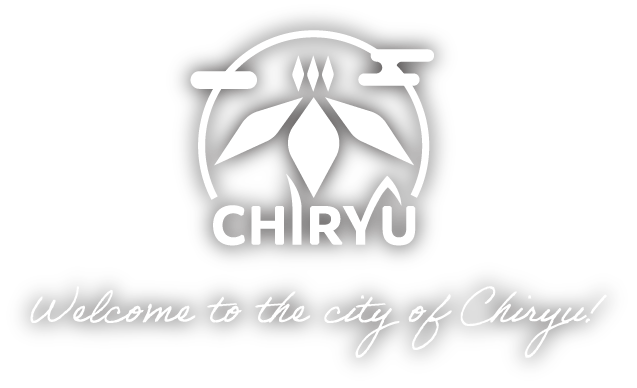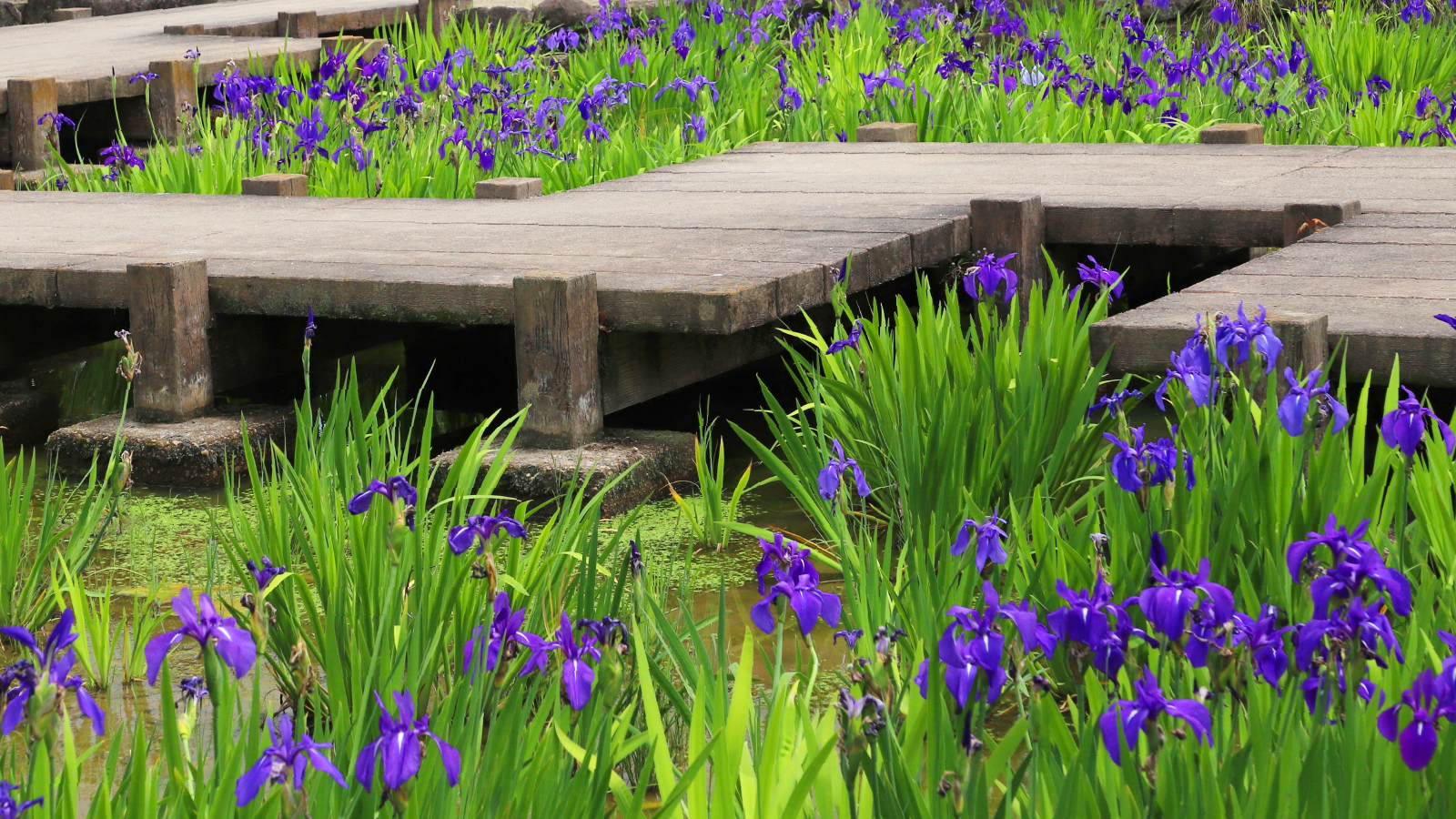
Overview of
Chiryu City
The city of Chiryu is located almost in the center of Aichi Prefecture. Chiryu is a transportation nexus with national and prefectural routes as well as Nagoya Railroad's Nagoya Main Line and Mikawa Line intersecting one another, welcoming and seeing off a large number of people day to day.
In ancient times during the Kamakura period, Chiryu was host to part of the Kamakura Road, and during the Edo period, its Chiryu Post Town prospered as the 39th stop from Shinagawa Post Town along the Tokai Road. Even today, the city offers visitors a chance to feel the Japan of days gone by.

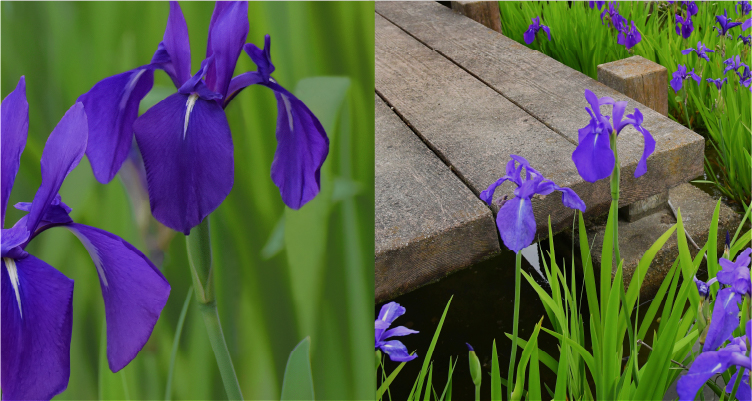
City flower
Water iris
The water iris serves as the city's floral symbol and was designated as such by citizens in August 1973. The water iris is known for its appearance in the Heian period's Tales of Ise when the main character, Ariwara no Narihira, stops at Yatsuhashi (near Chiryu's current town of Yatsuhashi) and recites a poem.

Popular eats
Ammaki
Chiryu offers plenty of special culinary delights, but its most famous would have to be Ammaki. Ammaki is a Japanese confection with a lightly toasted flour breading sandwiching sweet adzuki bean paste-beloved by all, regardless of age.


Chiryu mascot
Chiryuppi

Chiryu's mascot, Chiryuppi, is a boy absolutely crazy about Chiryu City. He sports a water iris atop a horse hoodie, illustrating the city's historic horse markets along the Tokai Road and reputation as a highly traveled transit stop along the Tokaido and Kamakura Roads. Chiryuppi wears a vest embroidered with the city emblem as he dons an Ammaki bag, packing in all the appeal of Chiryu with his kind and relaxed manner.
Go up and talk to Chiryuppi next time you see him at events, passionately promoting the city of Chiryu.


People with ties
to Chiryu


Tourist spots
-

Old Chiryu Castle Remains
Lord of nearby Kariya Castle, Mizuno Tadashige, built Chiryu Castle, where he wined and dined famous general Oda Nobunaga. However, the castle later collapsed during an earthquake in the early half of the Edo period.
-

Chiryu Post Town Toiyaba Remains
Toiyabas were administrative offices along Japan's post towns—stops along the road for travelers—and managed all aspects of work in the towns. They mainly readied horses and couriers for traveling officials until the next post town and worked in official communications, delivering official shogunate documents. Chiryu Post Town's toiyaba was torn down in 1971 and a monument now shows the area where it once stood.
-

Chiryu Post Town Honjin Remains
Honjins were inns exclusively for daimyos and other government officials. A honjin was located in Chiryu Post Town but torn down in 1875. A stone monument now shows where it stood.
-

Horse Market Monument
Chiryu once held horse markets said to have been held from April to May along the Chiryu Pine Tree Row, and mainly available during the Edo period, they were a lucrative business. The markets are well known thanks to portrayal by ukiyo-e artist Utagawa Hiroshige.
-

Legendary Yatsuhashi spot
This is a memorial tower to Ariwara no Narihira, the main character in the Tales of Ise, and is said to house some of his ashes.
-

Chiryu Pine Tree Row
The Chiryu Pine Tree Row runs approximately 500 meters along what was once the Tokai Road. The trees are believed to have served as shade for travelers walking along the road in the summer while blocking the cold winds of winter, and survive as a legacy of the historic road.
-

Raikoji Temple's Milestones
Milestones, or rather "ichi-ri" stones (one "ri", or approximately four km by the old Japanese unit of measurement), were ordered to be placed along roads in 1604 during the Edo shogunate. Chiryu still has two remaining—rare throughout Japan—with pine trees growing on the neighboring mounds.
-

Yatsuhashi Water Iris Garden
Yatsuhashi has been known as a scenic spot for its water irises since antiquity. Yatsuhashi Water Iris Garden has 16 ponds of various sizes and holds the Historic Yatsuhashi Water Iris Festival each year as the flowers come into bloom.
-

Muryojuji Temple
Muryojuji Temple is affiliated with the Buddhist Rinzai school's Myoshinji Temple. The temple serves as the location for the Yatsuhashi Water Iris Garden and Yatsuhashi Historical Preservation Museum as well as the Ancient Yatsuhashi Monument and other historic sights.
-

Chiryu Park's Japanese Iris Garden
Chiryu Park's Japanese irises were bestowed upon the park three times—in 1956, 1957, and 1960—by Meiji Jingu Shrine and include 60 varieties cherished by the late Emperor Meiji and Empress Shoken.
-

Chiryu Jinja Shrine
Shrine records state that Chiryu Jinja Shrine, also known as "Chiryu Daimyojin Shrine", was established around the time of Emperor Keiko's reign. It features a two-story pagoda which is a national important cultural property; three prefectural cultural properties, including the shrine sign board; and 15 city cultural properties including a lion mask.
-

Chiryu Kobosan Henjoin Temple
Henjoin Temple is the first temple to visit during pilgrimages around the three Mikawa Kobo Temples. Of the three statues of Monk Kobo Daishi, the Mikaeri Kobo Daishi statue here is the principal object of worship. The second stop on the Mikawa Kobo Temple pilgrimage is Saifukuji Temple in nearby Kariya City's town of Hitotsugi and the third stop is Mitsuzoin Temple in Kariya's town of Ichiriyama.

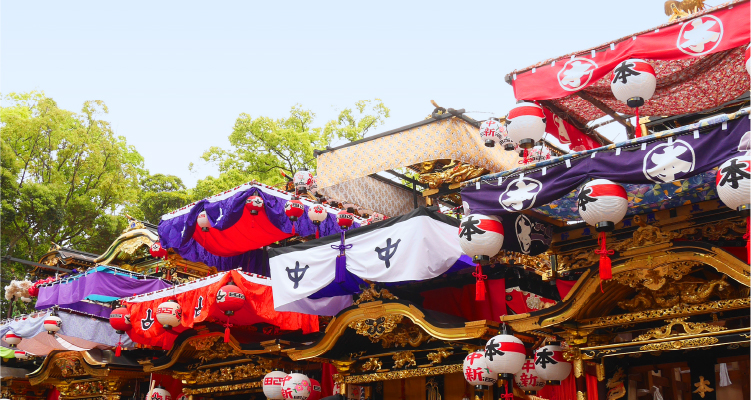
Festivals and events
-
Anniversary of Kobo Daishi's Death
- Period
- The 21st of each month on the lunar calendar
- Venue
- Chiryu Kobosan Henjoin Temple and surrounding area
Buddhist Monk Kobo Daishi passed away on the 21st of the lunar calendar, and each month on that date, Henjoin Temple holds a large festival with many eventgoers. Of particular interest is when the street outside Henjoin Temple becomes lined with shops, making it a pedestrian paradise and a chance to experience the good old Chiryu of yesteryear.
-
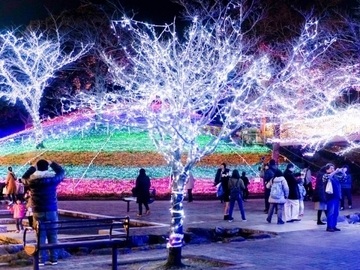
Chiryu Dream Illumination
- Period
- Around early Dec–early Jan
- Venue
- Chiryu Shinchi Dream Park
Chiryu Dream Illumination is one of the city's winter highlights with its surreal atmosphere brilliantly illuminating the venue area.
-

Chiryu Park Japanese Iris Festival
- Period
- Mid-May–early Jun
- Venue
- Chiryu Park's Japanese Iris Garden
Chiryu Park's Japanese irises were bestowed upon the park by Meiji Jingu Shrine and include 60 varieties cherished by the late Emperor Meiji and Empress Shoken. The Chiryu Park Japanese Iris Festival is held every year as the Japanese irises are in their prime. The irises greet eventgoers with incredible beauty and vivid coloration.
-

Historic Yatsuhashi Water Iris Festival
- Period
- Late Apr–mid-May
- Venue
- Yatsuhashi Water Iris Garden
The Historic Yatsuhashi Water Iris Festival has continued for approximately 70 years. Water irises are known for their appearance in a poem recited by Heian period poet Ariwara no Narihira and have long been a flower cherished by many. The flowers are available to view at any time during the festival period.
-

Temple Market
- Period
- The 3rd Sun of each month
- Venue
- Chiryu Kobosan Henjoin Temple
The Kobo Development Society holds a market at Henjoin Temple on the 3rd Sunday of every month from 9:00 am to 1:00 pm. The event began as a market selling handmade goods from trucks to bring new life to the area around Henjoin Temple in 2011, and in September of 2019, underwent renewal to become the temple market it is today. Freshly harvested fruits and vegetables, dried foods, handmade accessories and other products, pottery, crafts, and more are available for purchase at this lively market.
-
Chiryu Yoitoko Festival
- Period
- Late Aug
- Venue
- Near City Hall
The Chiryu Yoitoko Festival is one of the city's summer features. Citizens of Chiryu join in communal bon dancing and enjoy fireworks as well as various other events.
-
Akiba Festival
- Period
- Mid-Sep
- Venue
- Chiryu Jinja Shrine and surrounding area
The Akiba Festival is held every year on Sunday in mid-September. In the afternoon, young men from six towns in Chita (Yama-machi, Yamayashiki-cho, Naka-Shin-machi, Hon-machi, Nishi-machi, and Takara-machi) energetically carry ornate boxes around their towns while singing. In the evening, they enter Chiryu Jinja Shrine's premises and bravely perform a fireworks display using hand-held cannons.
-

Chiryu Festival
- Period
- May 2–3
- Venue
- Chiryu Jinja Shrine and surrounding area
Chiryu Festival is a festival of Chiryu Jinja Shrine and a huge event in the early summer, with the main festival and simpler version of the festival held every other year respectively. The five parade floats appearing during the main festival steal the gaze of eventgoers with their ornate beauty. Atop the floats, Chiryu's mechanized puppets—national important intangible cultural properties and UNESCO intangible cultural heritages—offer performances.


Facilities
-

Chiryu City History and Folk Culture Museum
Materials essential for a knowledge of Chiryu's history and culture, such as a diorama of Chiryu Post Town-a stop along the 53 post towns of the Tokai Road-and archeological artifacts from the Nishinaka Ruins.
-

Yatsuhashi Historical Preservation Museum
Yatsuhashi Historical Preservation Museum is home to numerous preserved cultural properties related to the history and culture surrounding the Yatsuhashi water irises.
-

Chiryu City Tourism Exchange Center
Find tourism information at this establishment doubling as a tourist information center as well as an event venue and shop with Chiryuppi and other merchandise.



